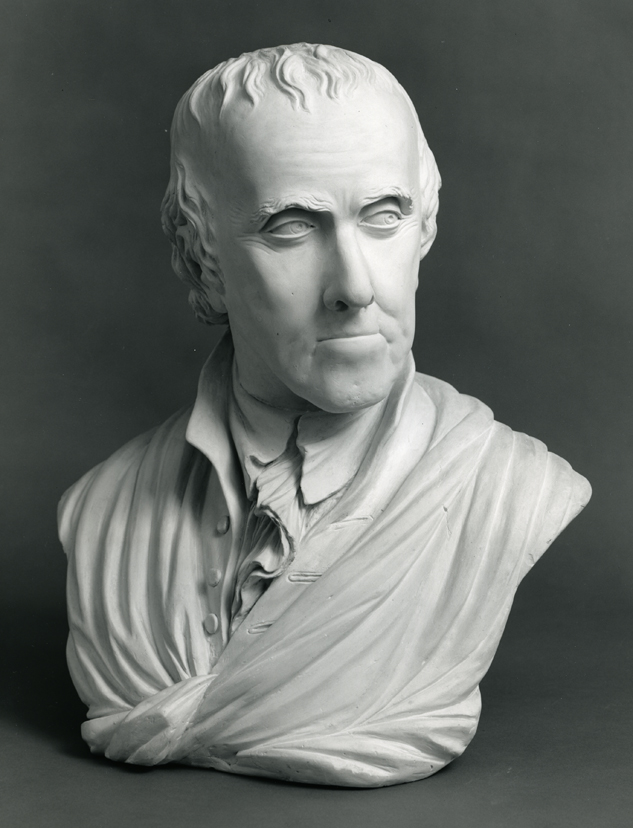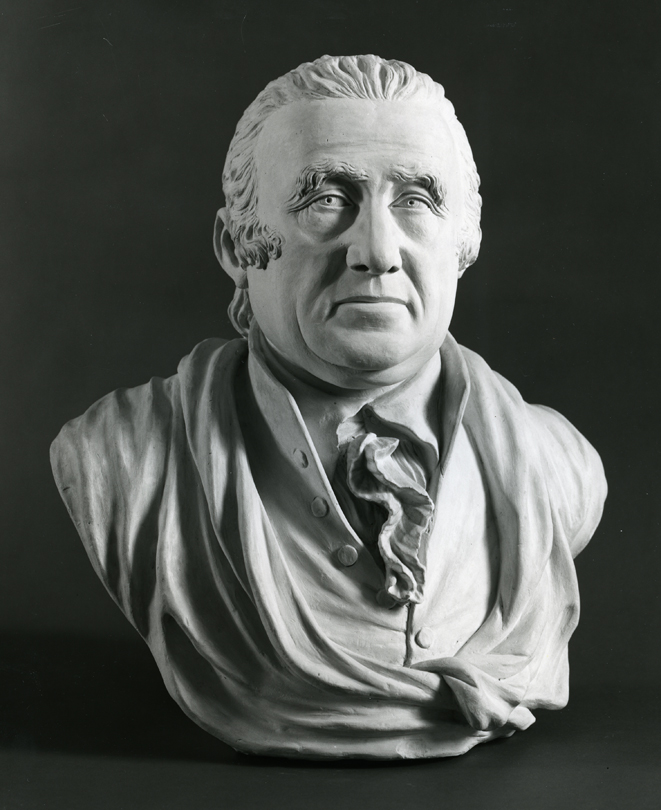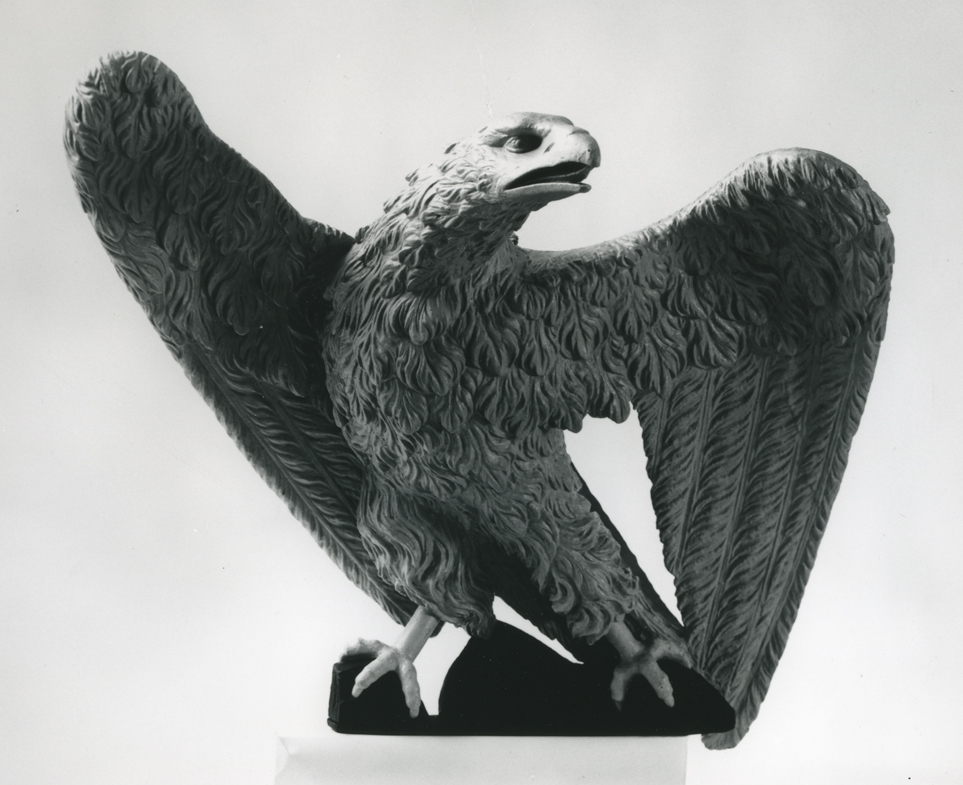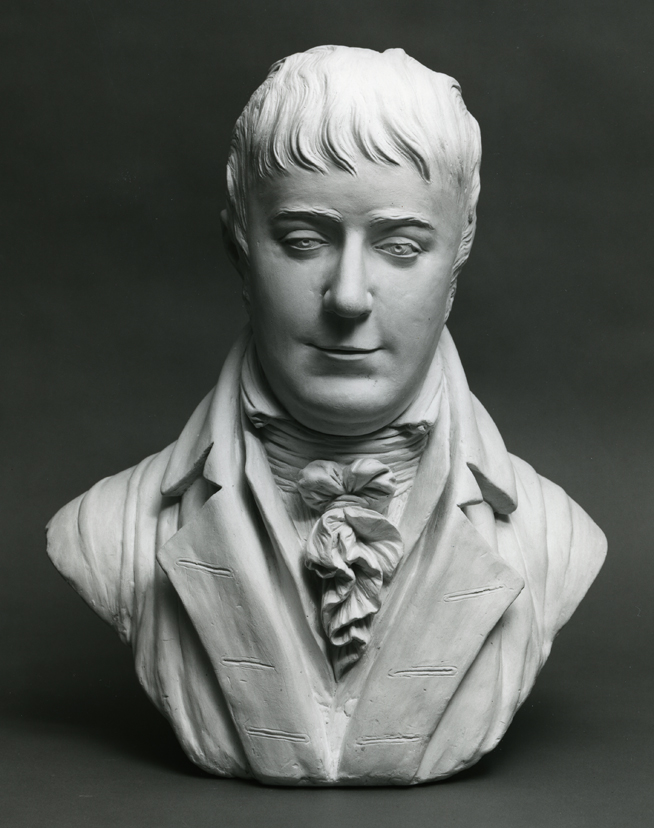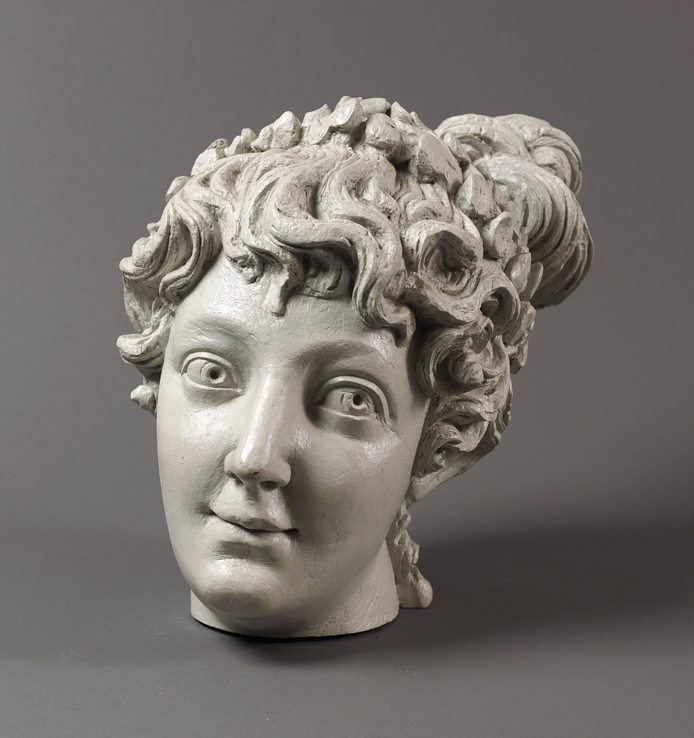
Head of the Nymph (Fragment from "Allegory of the Schuylkill River")
William Rush
One of three artists to sign the Pennsylvania Academy's founding charter, William Rush also served on the board until his death. He began carving figureheads and ships' ornaments about 1774. Usually carving American subjects, such as Indians or heroes like George Washington, his figureheads were admired at home and abroad for their masterful carving and poses. Rush was one of the earliest American sculptors to create busts of soldiers, statesmen, and scientists for the libraries of middle class gentlemen, six of which are in the Academy collection. His wooden sculptures, painted white to simulate antique marbles, anticipated the Neoclassical style soon to prevail in America. After 1807, Rush turned to architectural ornaments such as the statues of "Comedy" and "Tragedy" (Philadelphia Museum of Art on long term loan to the Academy) or the Academy's "Eagle." While serving on the City Council's Watering Committee, which built a civic waterworks at Philadelphia's Centre Square ( the site of City Hall), he carved the "Allegory of the Schuylkill River," a fountain depicting a female figure and bittern for its grounds (see 1845.3.1) "Head of a Nymph" is all that remains of the original wooden sculpture. Carved from a live model, Louisa Vanuxem, the work exhibits typical Rush details such as the carved-out pupils surrounded by an incised line and deeply carved curls and topknot.
Artist
Date of Birth
(1756-1833)
Date
1809
Medium
Pine
Dimensions
10 x 9 1/2 x 10 in. (25.4 x 24.13 x 25.4 cm.)
Accession #
1990.8
Credit Line
Henry S. McNeil Fund
Copyright
No known copyright restrictions
Category
Subject
More by William Rush
We're so excited you're planning to visit PAFA!
Make time for art — visit us Thursday to Sunday.
Before reserving your tickets, please review helpful information about museum hours, accessibility, building access, and special admission programs.
If you have any questions, feel free to reach out to us at visitorservices@pafa.org — we’d love to help!
